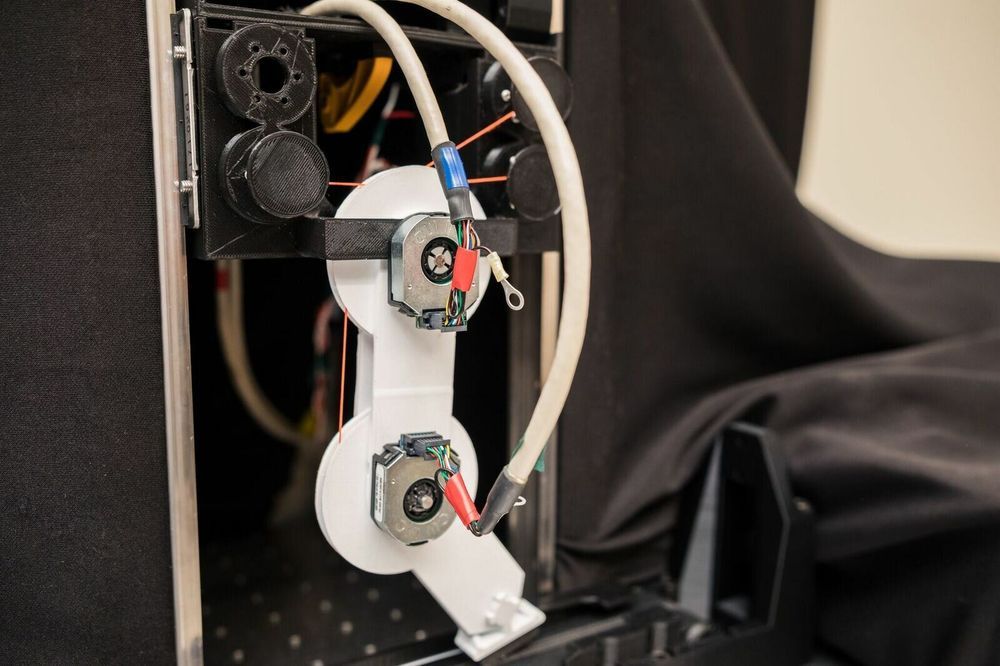For a newborn giraffe or wildebeest, being born can be a perilous introduction to the world—predators lie in wait for an opportunity to make a meal of the herd’s weakest member. This is why many species have evolved ways for their juveniles to find their footing within minutes of birth.
It’s an astonishing evolutionary feat that has long inspired biologists and roboticists—and now a team of USC researchers at the USC Viterbi School of Engineering believe they have become the first to create an AI-controlled robotic limb driven by animal-like tendons that can even be tripped up and then recover within the time of the next footfall, a task for which the robot was never explicitly programmed to do.
Francisco J. Valero-Cuevas, a professor of Biomedical Engineering a professor of Biokinesiology & Physical Therapy at USC in a project with USC Viterbi School of Engineering doctoral student Ali Marjaninejad and two other doctoral students—Dario Urbina-Melendez and Brian Cohn, have developed a bio-inspired algorithm that can learn a new walking task by itself after only 5 minutes of unstructured play, and then adapt to other tasks without any additional programming.
